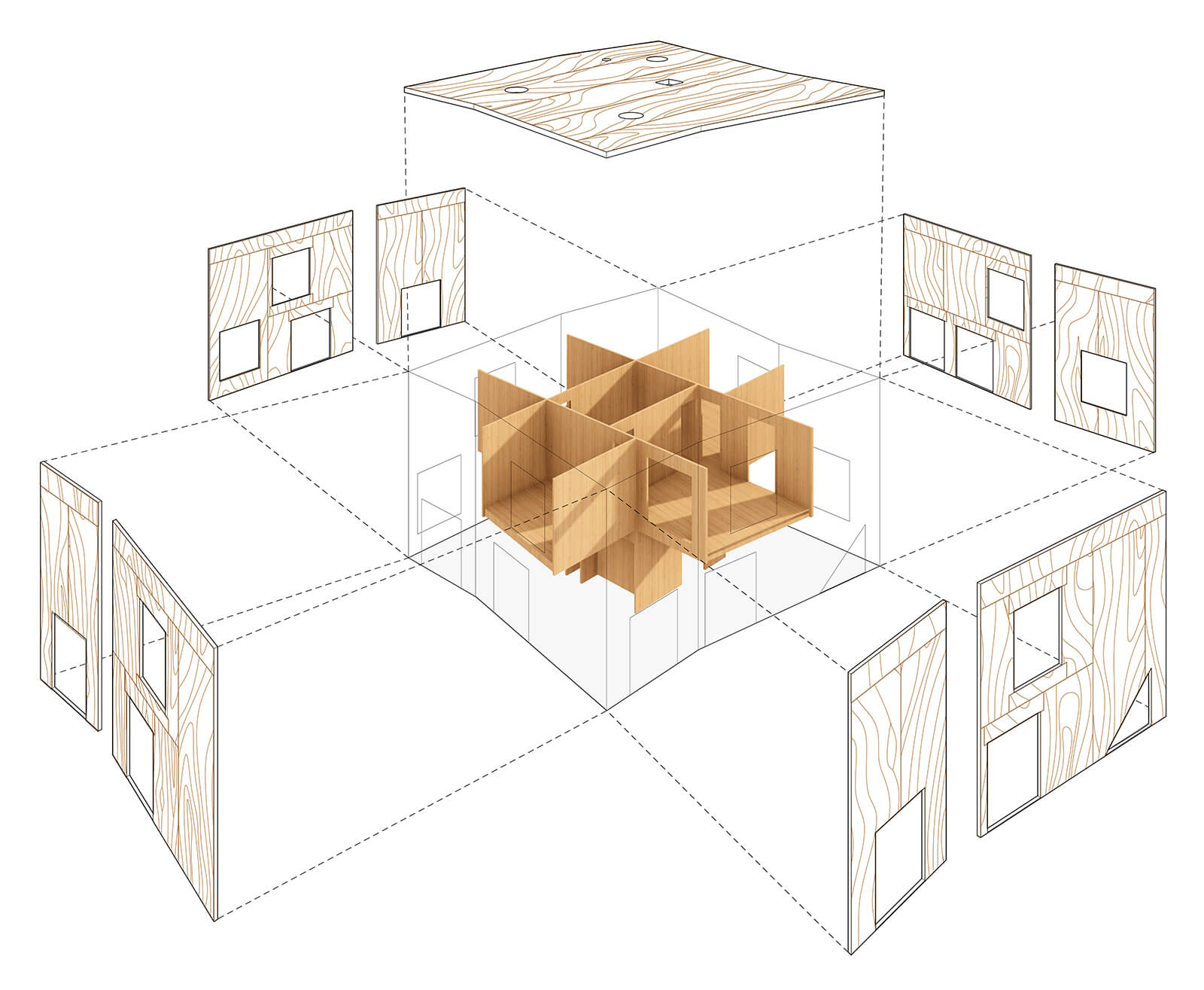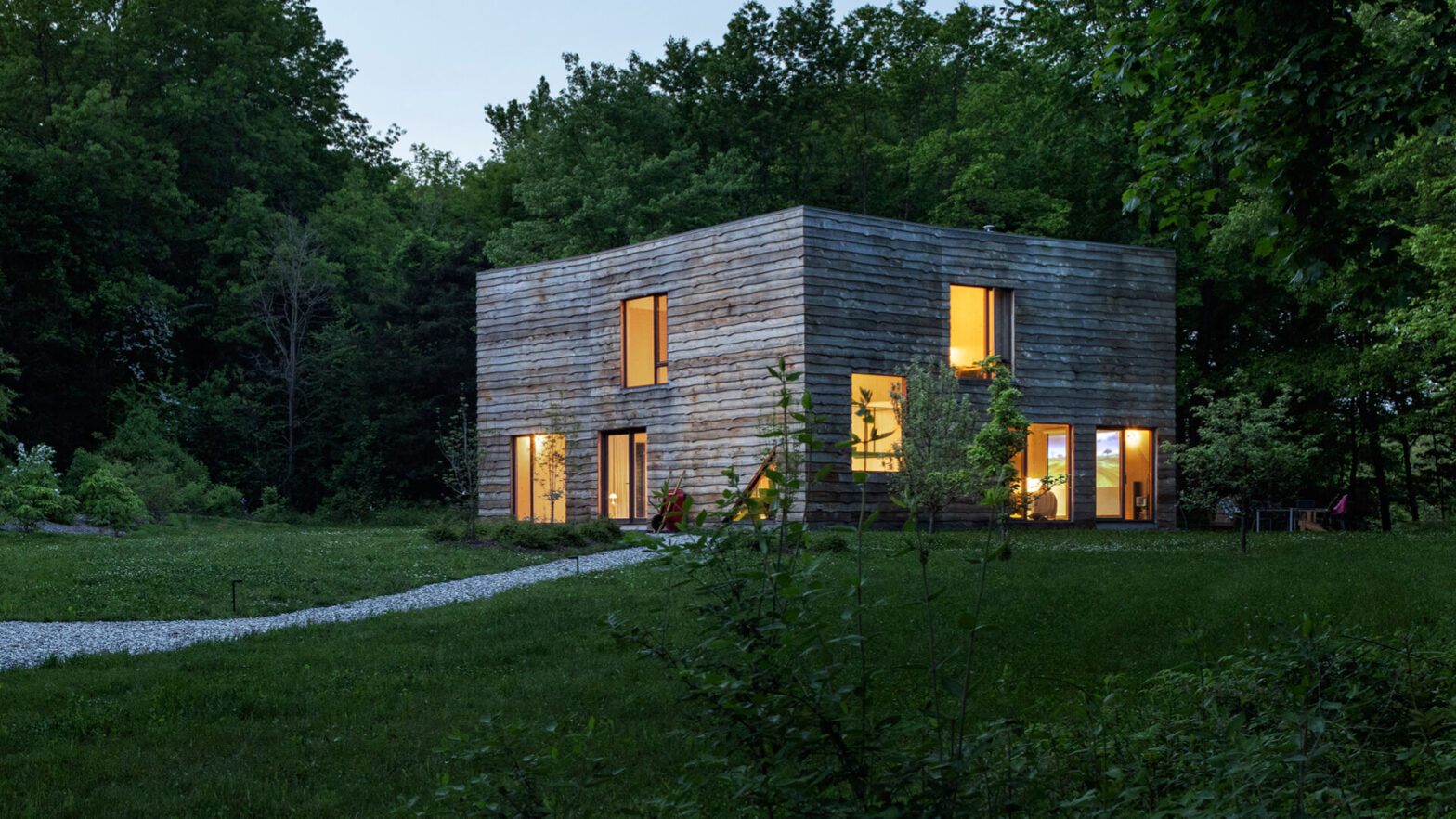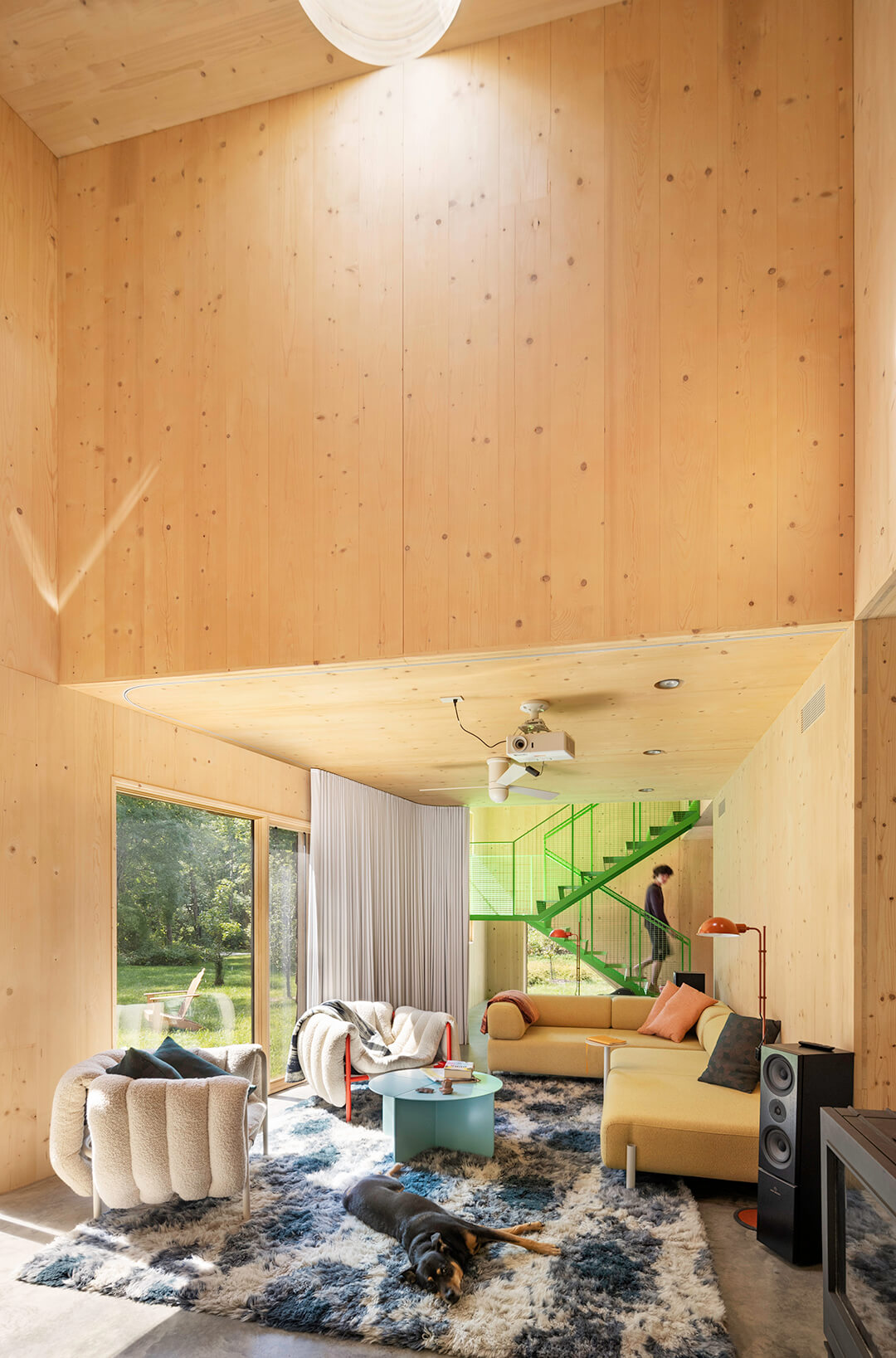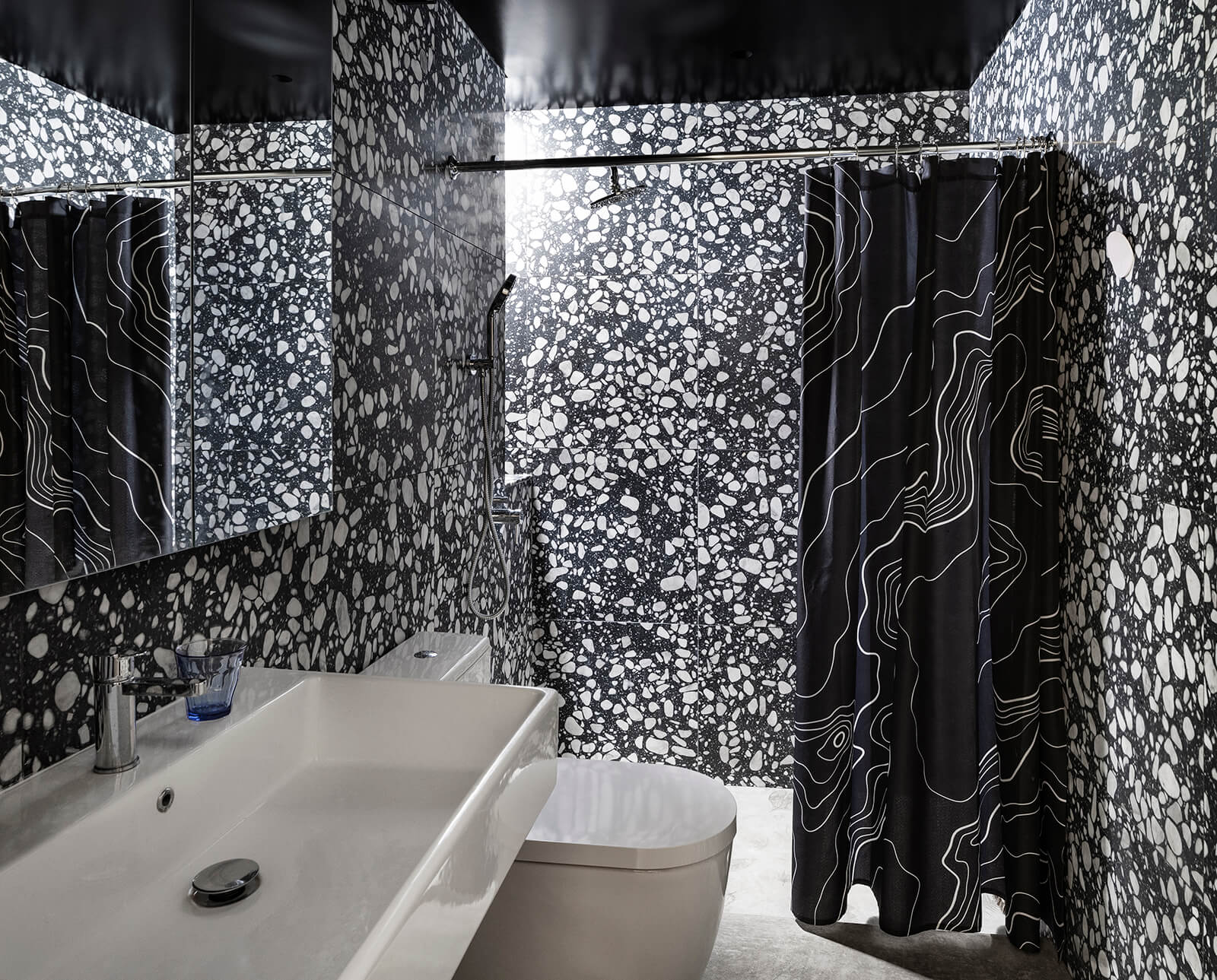What does it mean to design a house that harmonizes with its natural environment and at the same time includes the latest sustainability? The CLT House, embedded in a forest paralysis near a quiet lake in Dutchess County, New York, answers this question with innovation and sensitivity. The two -story house with narchitects based in Brooklyn is a 2200 square meter house is proof of progressive sustainability, material efficiency and thoughtful integration into its surroundings.
From the beginning, the project aimed to create a slight ecological footprint. By being 200 feet from the lake, the architects kept the natural coast and reduced their effects on the surrounding habitat. Remote trees were replaced by a varied selection of species, the ecosystem being enriched. In addition, invasive water systems were cleared to improve the river and water quality of the lake, which shows an obligation to improve the natural health of the location.
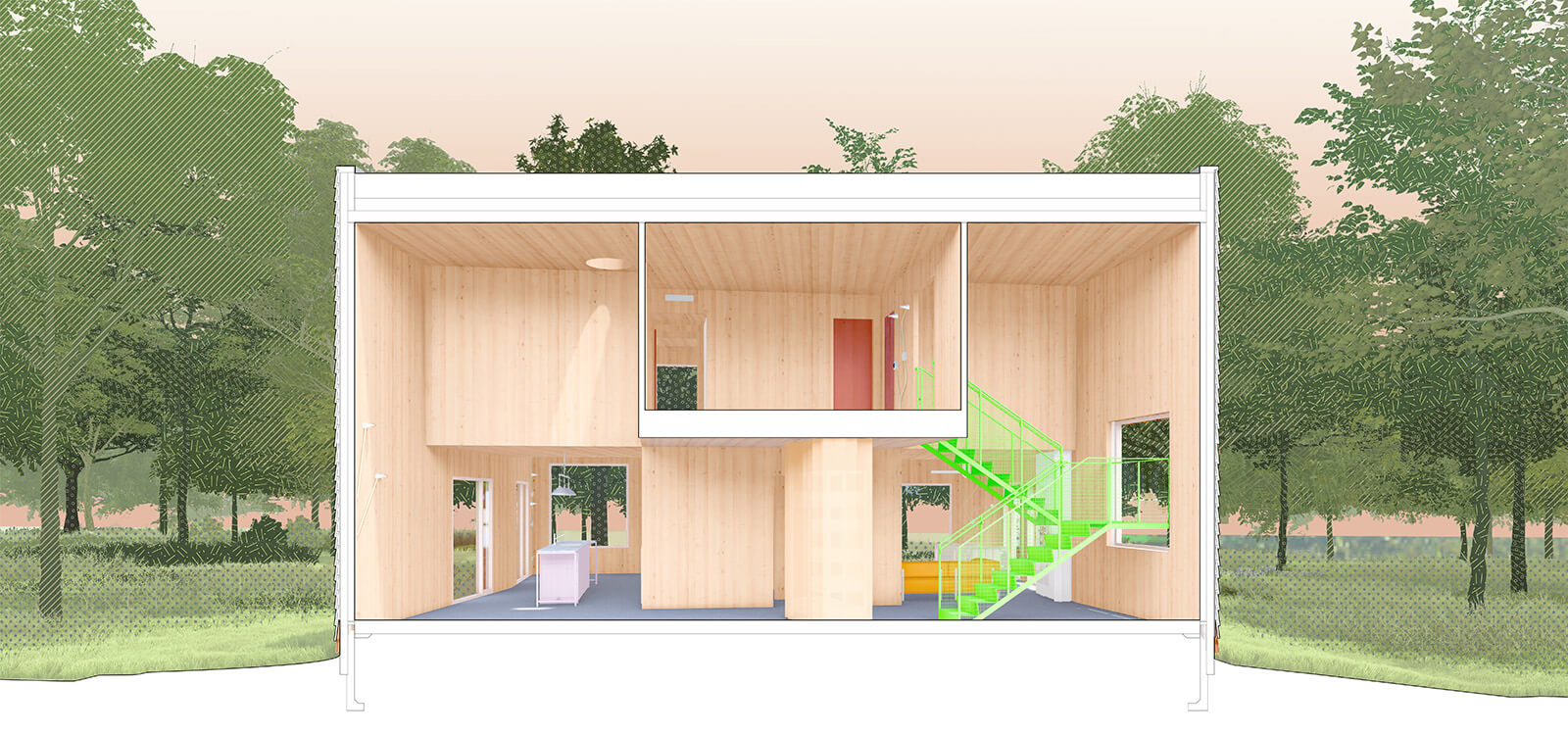
The primary building material of the house, cross-laminated wood (CLT), is a sustainable choice that gains traction in the USA. CLT is known for its ecological advantages, fire strength and structural efficiency and forms the walls, floors and the roof of the house. The material also offers a warm, natural aesthetic that is celebrated in the entire interior of the house. The installation of this prefabricated panel took only 11 days and rested on concrete foundation walls that were set in less than a week. This fast meeting minimized the disorder of the location and its neighbors and embodied a philosophy of the construction with a low impact.
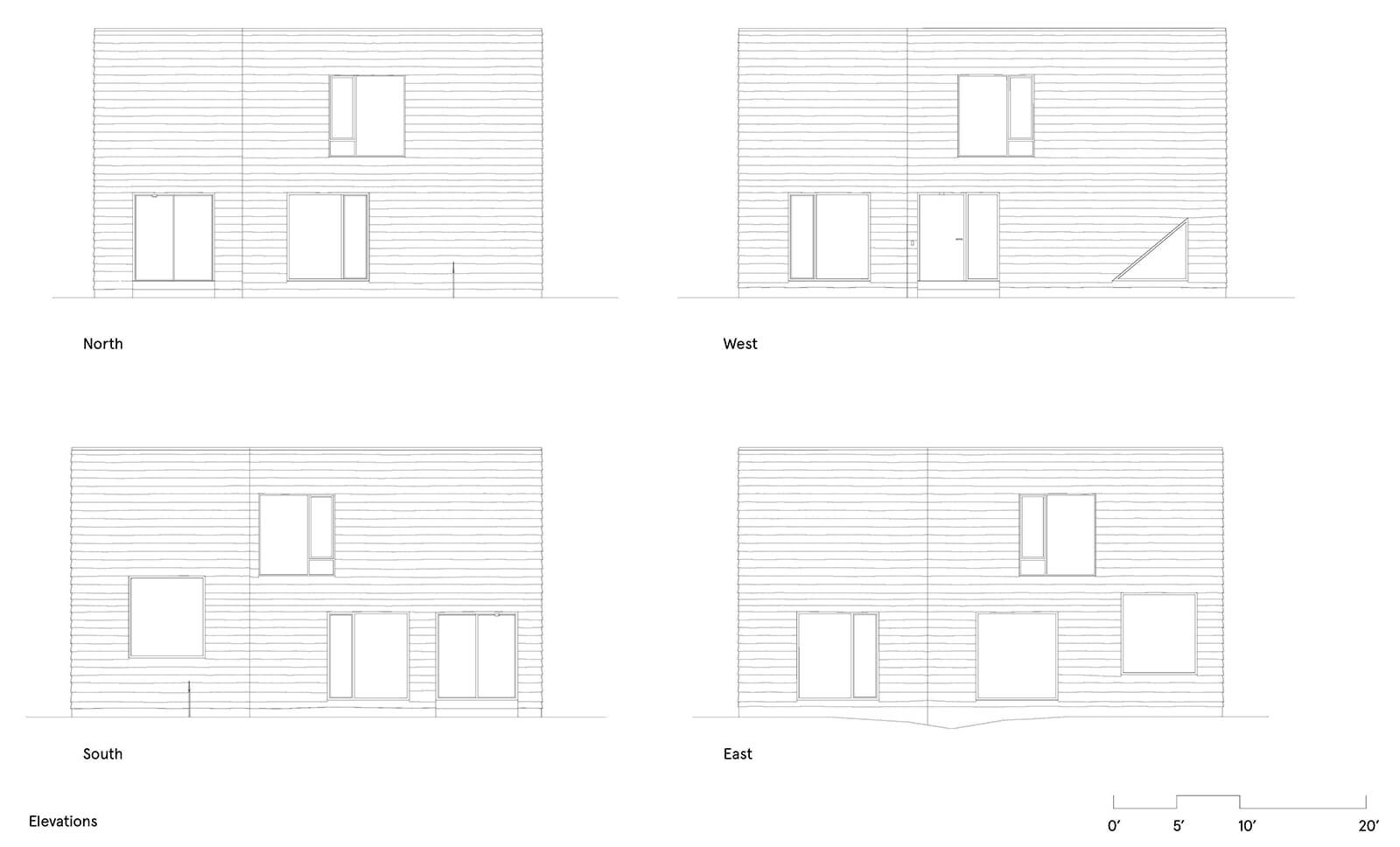
The rise of cross-laminated wood in American architecture is a broader shift to progressive, environmentally conscious building practices. While this material has been used in Europe for decades, its introduction to the United States is relatively new. Projects such as this show how this technology is now not only integrated into a large -scale commercial architecture, but also into the design in residential areas and signals a new chapter for sustainable construction work in urban and rural environments.
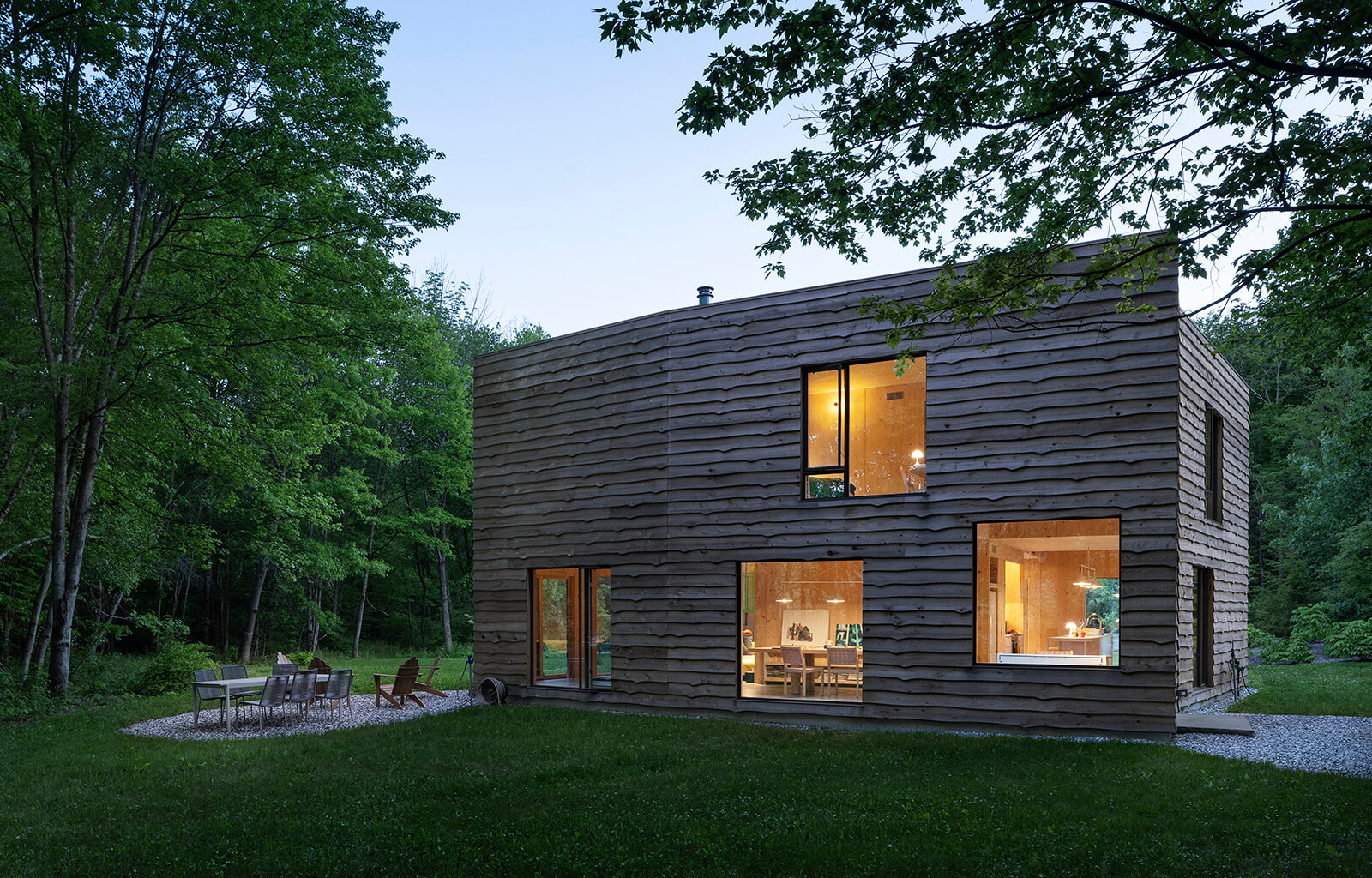
The exterior of Clt House compensates for contemporary design with centuries -old practices. Its faceted volume is wrapped in live-edge cedar panels, an untreated cladding technique that goes back to early settlers. This method, which is known as a Wany board, leaves the natural edge of the wood intact and gives the house a structured, organic appearance. Over time, depending on the orientation and canopy cover, the cedar will survive differently and integrate the structure into its surroundings. The use of untreated cedar combines the residence with the local architecture, which is based in American craftsmanship. In the past, this technology reflected a practical reaction to the availability of resources, since Siedler used every part of the tree. In Clt House, this traditional approach assumes modern importance and celebrates the natural beauty of the material. The raw cedar invites the elements to shape its patina over time and add another level of the narrative to the connection of the house with its surroundings.
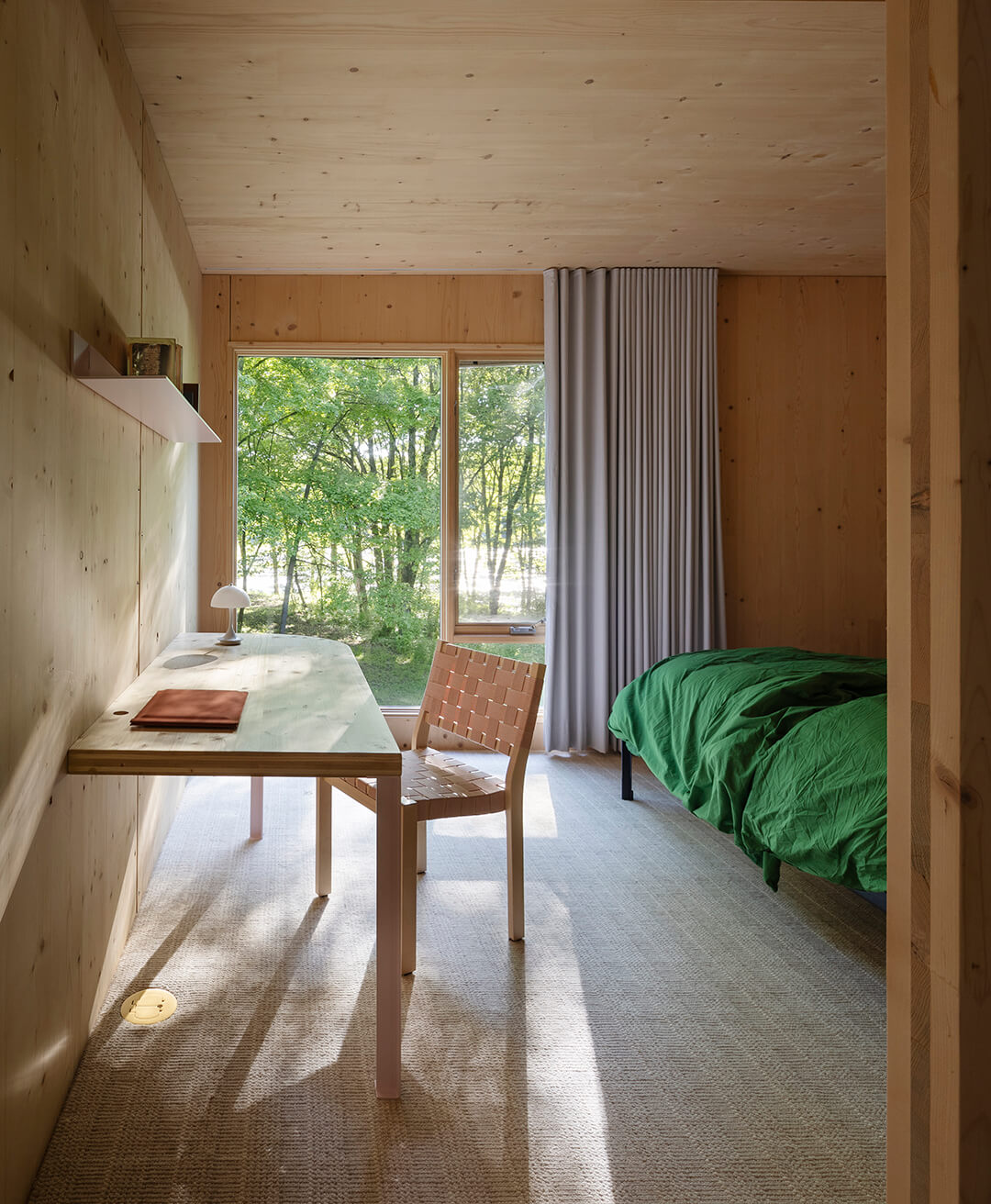
Sustainability is embedded in all aspects of the sustainable architecture project. The building integrates highly efficient energy systems, including geothermal fountain, paired with a radiation floor system for heating and cooling down. Solar modules on the roof create excess electricity and ensure that the house works with net-positive energy. These measures in combination with its compact footprint and resource -efficient materials underline the obligation to get advancing environmental responsibility.
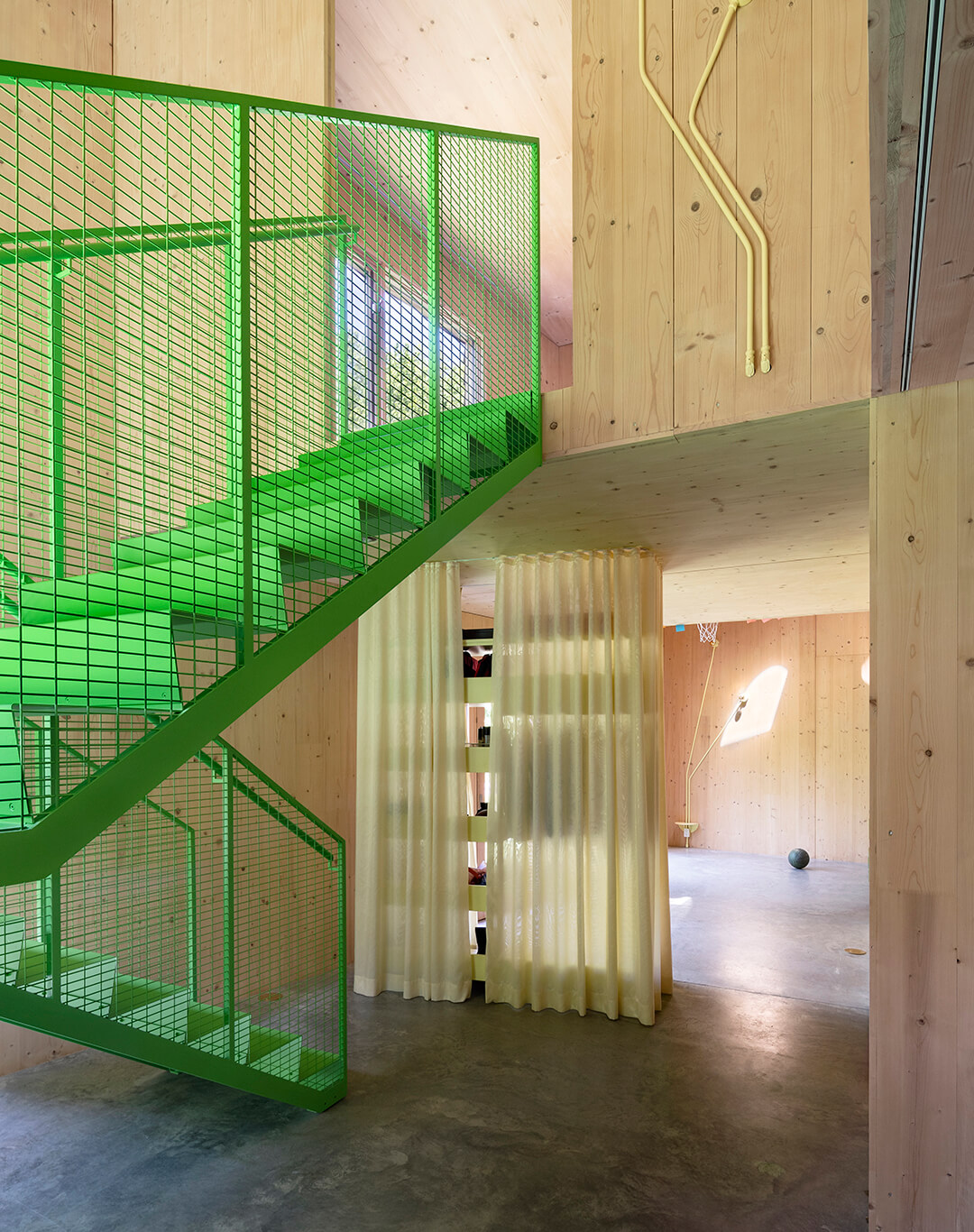
Inside, the house shows a balance between materiality and design. The monolithic use of CLT for walls, floors and ceilings creates a coherent and urgent environment. In order to compensate for the natural tones of the wood, customer -specific metal accents in color and texture appear. A sculptural staircase, shine, the vines and a striking kitchen island are similar, are among the elements that give a contemporary flair. Large windows and sliding doors frame a panoramic view of the forest and the lake and immerse themselves in the surrounding landscape.
The layout of this private residence is both functional and poetic. The first floor has open living, dining and kitchen areas that are organized around a central core in a bathroom and a machine room. On the second floor, a plus -shaped plan divides the room into a study, three bedrooms and a second bathroom. Double height cavities on each corner connect the level and create dramatic vertical rooms, which are anchored by characteristics such as a wood oven. A corner could accommodate a cozy reader, while another frames an uninterrupted view of the lake. These rooms combine the levels visually and create moments of intimacy within the house and offer different settings for reflection, creativity or relaxation. Senmal lights covered with mirrored interior panels bring dynamic light into these corners and reflect the changing daylight like the hands of a watch that move through the day.
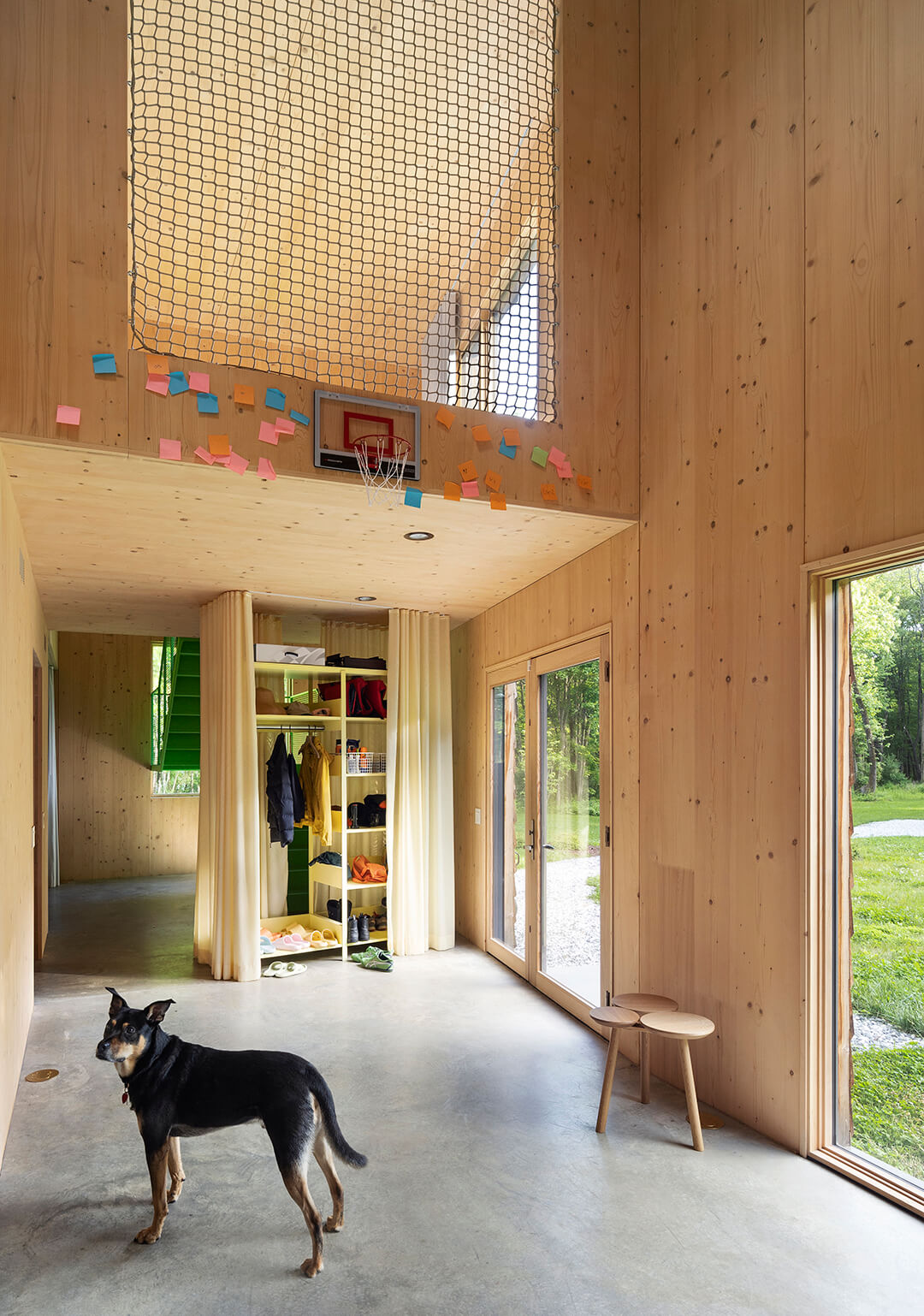
The house also performs ideas from the earlier work of narchitects. The spatial organization is reminiscent of the company that was not built by the company for the Ordos 100 project in the inner Mongolia, which was curated by the Chinese artist Ai Weiwei. While this initiative examined larger forms, CLT House interpreted these ideas on a more modest and sustainable scale and demonstrated the company's ability to adapt and innovate in the contexts.
The studio's design approach is based on social and ecological resistance. The American architects were founded in 1999 by Eric Bunge and Mimi Hoang with projects that include public spaces, cultural institutions and private residences, and have created a practice that organizes architecture with the developing needs of society and the planet. The studio is recognized with numerous awards, including the National Design Award in Architecture from the Cooper Hewitt and the Smithsonian Design Museum and continues to cross borders with such residential architecture projects.

Clt House is not only a private retreat, but also offers lessons for a wider community of homeowners, architects and developers. The project demonstrates the potential of sustainable materials and low development techniques and encourages others to consider how thoughtful design affect environmental problems and at the same time improve everyday life. However, it challenges us to ask: Can such projects of unique examples of the newly define how residential construction looks on a larger scale?
